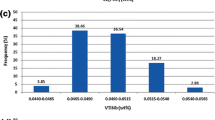Abstract
Methods of economical alloying of high pipe steels were considered in the paper. Due to the large environmental, energy, and economic issues in the destruction of the pipeline, the quality of steel pipes is very important. The method described in this article is considered to be relevant not only for pipe steels but also for high-strength steels used in shipbuilding, bridge construction, etc. Review mechanisms of strengthening microalloyed steels were carried out in this work. Schema evolution of the microstructure of microalloyed steels was discussed. The influence of alloying elements in steel by means of optimal process parameters of thermomechanical rolling was analyzed. There are two methods of mathematical modeling used in the study: artificial neural networks (ANNs) which are based on the multilayered perceptron to select the optimal chemical composition and finite element analysis to optimize the process parameters. An experimental dataset was used to train multilayer perceptron (MLP) networks to allow for prediction of the yield strength, tensile strength, and elongation of steel. Due to large availability, low cost, and high accuracy of the results, these methods are considered to be the most promising ones. The mathematical model for calculating mechanical properties of a rolling pipe has been developed. Two ways to reduce the cost of a hot-rolled plate made of microalloyed steels were developed. There has been developed the complex of replacement technological impact which can make it possible to replace or reduce the amount of expensive chemical elements (vanadium, nickel, copper, manganese, chromium, and niobium) without loss of quality.
Similar content being viewed by others
References
Koo JY, Luton MJ (2003) Metallurgical design of ultra-high strength steels for gas pipeline. Proceedings of the Thirteenth International Offshore and Polar Engineering Conference Honolulu, Hawaii, pp 10–18
Gräf M, Schröder J (2002) Production of large diameter pipes grade X70 with high toughness using acicular ferrite microstructures. International Conference on Application and Evaluation of High Grade Linepipes in Hostile Environments 13
Langley D, Killmore C (2010) Steel—meeting the needs of an evolving line-pipe industry. Steel for Pipelines, 10
Huang S, Khan AS (1992) Modeling the mechanical behavior of 1100-0 aluminum at different strain rates by the Bonder-Parton model. Int J Plast 8:501
Artz E (1998) Size effect in materials due to microstructural and dimensional constraints: a comparative review. Acta Mater 46:5611–5626
Apostolos N, Vasilakos A (1999) Experimental determination of the stability of retained austenite. Steel Research 11:466–471
Grill R (2010) Advanced steels for heavy plates: alloy design, plate production and properties. Voestalpine Grobblech GmbH, Linz, p 55
Hillenbrand HG (2002) Production and service behaviour of high strength large diameter pipe. International Conference on Application and Evaluation of High Grade Linepipes in Hostile Environments, November 8–9. Yokohama, Japan 1–16
Chandel J (2011) Formation of X120 line pipe through J-C-O-E technique. Engineering 400–410
Pereda B, Fernandez A (2007) Effect of Mo on dynamic recrystallization behavior of Nb-Mo microalloyed steels. ISIJ Int 47(6):860–868
Dong JX (2000) Effect of silicon on the kinetics of Nb(C,N) precipitation during the hot working of Nb-bearing steels. ISIJ Int 40:613–618
Boratto F, 1988. Effect of chemical composition on critical temperatures of microalloyed steels. Proceedings of THERMEC 88. Iron and Steel Institute of Japan, Tokyo, 383–390.
Salganik VM, Chikishev DN, Pozhidaeva EB, Nabatchikov DG (2016) Analysis of structural and phase transformations in low-alloy steels based on dilatometric studies. Metallurgist 59(9–10):766–773
Živko-Babić J, Lisjak D, Ćurković L, Jakovac M (2008) Estimation of chemical resistance of dental ceramics by neural network. Dent Mater 24(1):18–27
Salganik VM, Pesin AM, Chikishev DN (2008) Effective rough rolling of low-alloy steel. Steel in translation 9(38):767–769
Hodgson PD, Gibbs RK (1992) A mathematical model to predict the mechanical properties of hot rolled C-Mn and microalloyed steels. ISIJ Int 32(12):1329–1338
Gibbs RK, Parker BA (1993) Proc. of International Symposium on Low-Carbon Steels for the 90's. Pittsburgh, USA 173
Mirzakhani B, Taghi SM (2009) Investigation of dynamic and static recrystallization behavior during thermomechanical processing in an API-X70 microalloyed steel. J Mater Eng Perform 18(8):1029–1034
Cho S, Kang K (2001) Mathematical modeling of the recrystallization kinetics of Nb microalloyed steels. ISIJ Int 41(7):766–773
Kocabas F, Korkmaz M, Sorgucu U, Donmez S (2010) Modeling of heating and cooling performance of counter flow type vortex tube by using artificial neural network. Int J Refrig 33(5):963–972
Wu S-J, Shiah S-W, Yu W-L (2009) Parametric analysis of proton exchange membrane fuel cell performance by using the Taguchi method and a neural network. Renew Energy 34(1):135–144
A Daryasafar, A Ahadi, R Kharrat (2014) Modeling of steam distillation mechanism during steam injection process using artificial intelligence. Sci World J 2014:Article ID 246589, 8 pages
Author information
Authors and Affiliations
Corresponding author
Rights and permissions
About this article
Cite this article
Chikishev, D., Pozhidaeva, E. Mathematical modeling of steel chemical composition and modes of thermomechanical treatment influence on hot-rolled plate mechanical properties. Int J Adv Manuf Technol 92, 3725–3738 (2017). https://doi.org/10.1007/s00170-017-0435-6
Received:
Accepted:
Published:
Issue Date:
DOI: https://doi.org/10.1007/s00170-017-0435-6




